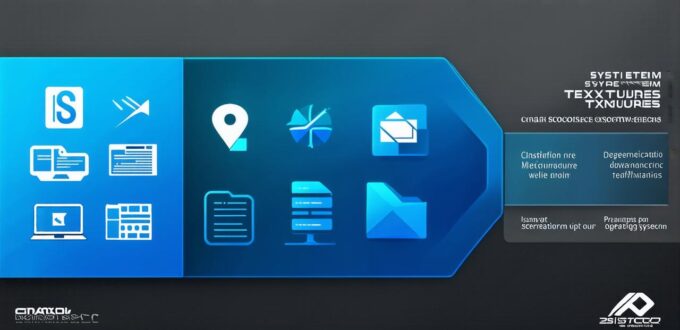Application software refers to the type of software that end-users interact with most frequently, providing specific functions or services to users. Examples of application software include Microsoft Office, Photoshop, and Chrome. These programs are designed to perform specific tasks, such as word processing, graphic design, or web browsing, making them essential tools for productivity and efficiency.
Application software is typically developed by companies that specialize in the particular task or function they provide. For example, Microsoft is well-known for its Office suite of productivity applications, while Adobe is famous for its Photoshop graphics editor. These programs are designed to be easy to use and intuitive, with user-friendly interfaces that allow users to perform complex tasks quickly and efficiently.
Application software can also be customized to meet the specific needs of individual users or organizations. For example, a company might develop its own branded version of Microsoft Office, with custom logos, color schemes, and templates that reflect their branding and messaging. This type of customization allows businesses to differentiate themselves from their competitors while still leveraging the power and functionality of popular application software.
In addition to productivity applications, there are many other types of application software available to meet a wide range of needs. For example, game development software like Unity or Unreal Engine allow users to create immersive games and simulations, while multimedia production software like Final Cut Pro or Premiere Pro enable users to edit videos, audio, and other media content. These programs are often used by professionals in the entertainment industry to create high-quality productions that engage and delight audiences around the world.
1. Real-Time Operating Systems: A Special Type of OS
Real-time operating systems (RTOS) are a type of operating system that prioritize real-time performance over other tasks. These systems are designed to meet strict response times, ensuring that critical functions such as flight control, medical devices, and military applications can operate without interruption. RTOSs use specialized algorithms and scheduling mechanisms to ensure that high-priority tasks are executed promptly and efficiently.
RTOSs are used in a wide range of applications, from automotive systems to medical devices and military equipment. For example, an aircraft’s flight control system relies on real-time processing to ensure that the plane remains stable and responsive, even in the face of sudden changes in altitude or speed. Similarly, medical devices such as pacemakers and defibrillators require real-time processing to monitor vital signs and deliver life-saving shocks when necessary.
Real-time operating systems are different from traditional operating systems in several key ways. Firstly, they typically have a smaller memory footprint and a more streamlined design, as they prioritize performance over other features such as multitasking and file management. Secondly, they often use specialized hardware or architecture to ensure that critical tasks are executed quickly and efficiently. Finally, they rely on specialized programming languages and tools to develop software that is optimized for real-time performance.
1. Case Study: A Look at System Software in Action
Let’s take a look at a real-world example of how system software works together to provide a seamless user experience. Consider a modern smartphone, which relies on a variety of system software components to function effectively. The operating system manages the phone’s hardware resources and provides a platform for users to interact with applications and the device’s features. For example, the operating system controls the phone’s camera, allowing users to take photos and videos, and manages the device’s storage, ensuring that files and data are saved securely.

In addition to the operating system, the smartphone also uses a variety of system utilities to perform maintenance tasks and optimize performance. For example, Disk Cleanup is a built-in utility that frees up disk space by deleting temporary files and other unneeded data.
